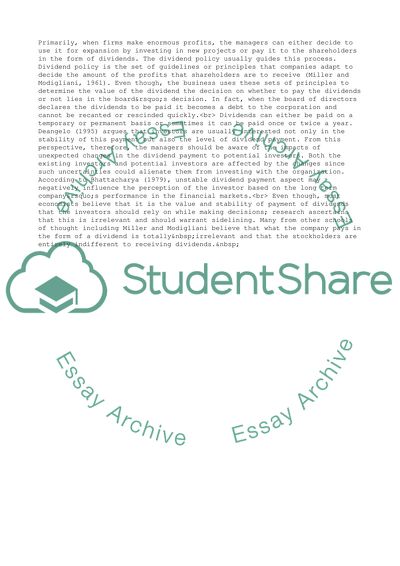Cite this document
(“Examine the view that dividends are irrelevant to rational investors Assignment”, n.d.)
Retrieved from https://studentshare.org/business/1690367-examine-the-view-that-dividends-are-irrelevant-to-rational-investors-when-considering-the-value-of-shares-from-a-theoretical-and-empirical-perspective
Retrieved from https://studentshare.org/business/1690367-examine-the-view-that-dividends-are-irrelevant-to-rational-investors-when-considering-the-value-of-shares-from-a-theoretical-and-empirical-perspective
(Examine the View That Dividends Are Irrelevant to Rational Investors Assignment)
https://studentshare.org/business/1690367-examine-the-view-that-dividends-are-irrelevant-to-rational-investors-when-considering-the-value-of-shares-from-a-theoretical-and-empirical-perspective.
https://studentshare.org/business/1690367-examine-the-view-that-dividends-are-irrelevant-to-rational-investors-when-considering-the-value-of-shares-from-a-theoretical-and-empirical-perspective.
“Examine the View That Dividends Are Irrelevant to Rational Investors Assignment”, n.d. https://studentshare.org/business/1690367-examine-the-view-that-dividends-are-irrelevant-to-rational-investors-when-considering-the-value-of-shares-from-a-theoretical-and-empirical-perspective.


